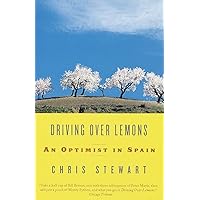The Role of Family Traditions in Preserving Spain’s Regional Recipes
Spain is a country rich in culinary diversity, where regional recipes tell stories of history, geography, and culture. From the sun-drenched coasts of Andalusia to the green hills of Galicia, each region boasts its own unique dishes, often rooted in centuries-old traditions. But what keeps these recipes alive in an age of globalization and fast food? The answer lies in the heart of Spanish life: the family. Family traditions play a vital role in preserving Spain’s regional recipes, passing down cooking techniques, flavors, and stories from one generation to the next. This article explores how family traditions not only keep these recipes alive but also strengthen cultural identity and community bonds. By understanding the role of family in culinary heritage, readers can gain a deeper appreciation for the rich tapestry of Spanish cuisine and perhaps be inspired to explore and preserve their own culinary traditions.
The Heart of Spanish Kitchens
In Spain, the kitchen is not just a place to cook; it’s the heart of the home. Family gatherings often revolve around food, where recipes are shared, and cooking becomes a communal activity. In many families, it’s the grandmother who holds the culinary secrets, teaching her children and grandchildren the art of making the perfect paella or tortilla española. These cooking sessions are more than just lessons; they are rituals where stories are told, and traditions are reinforced. The kitchen becomes a living museum of regional history, where the past is kept alive through flavors and aromas. This hands-on approach to learning ensures that traditional recipes are passed down accurately, preserving the authenticity that defines Spanish cuisine.
Regional Variations and Family Secrets
Spain’s diverse geography has given rise to a wide variety of regional dishes, each with its own unique ingredients and cooking methods. In the Basque Country, fish and seafood dominate the menu, while in Catalonia, the focus is on rich stews and sausages. Andalusia is famous for its gazpacho and fried fish, while Galicia is known for its hearty seafood stews. Within these regions, family traditions add another layer of complexity. Each family may have its own special twist on a classic dish, whether it’s a secret ingredient or a unique cooking technique. These variations are often closely guarded secrets, passed down only within the family, highlighting the personal connection each family has to their regional cuisine. This diversity within regions is what makes exploring Spanish food such a rewarding experience.
Celebrations and Culinary Heritage
Throughout Spain, family celebrations are closely tied to food. Weddings, baptisms, and religious festivals often feature traditional dishes that have been part of the family for generations. During Christmas, many families prepare turrón, a nougat made with almonds and honey, while on Easter, it’s common to enjoy lamb or suckling pig. These dishes are not just meals; they are symbols of the family’s history and heritage. Cooking for these celebrations is often a collective effort, involving multiple generations who come together to prepare the feast. This communal cooking not only strengthens family bonds but also ensures that everyone learns the family’s culinary traditions. As a result, these recipes are kept alive and continue to be a central part of family life, reinforcing cultural identity and community ties.
A Living Tradition
Family traditions play a crucial role in preserving Spain’s regional recipes, ensuring that these culinary gems are passed down through the generations. By keeping these traditions alive, Spanish families maintain a strong connection to their cultural heritage and regional identity. In a rapidly changing world, where fast food and globalized diets are becoming the norm, the role of family in preserving traditional recipes is more important than ever. For those interested in exploring their own culinary roots, Spain offers a wealth of inspiration. By embracing the family traditions that have kept regional recipes alive, we can all play a part in preserving the rich tapestry of flavors that defines Spanish cuisine.





